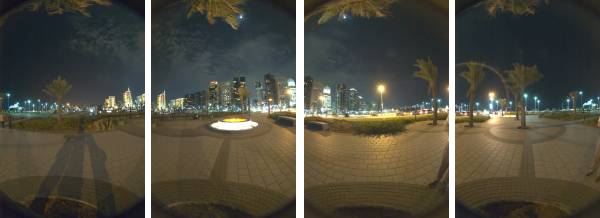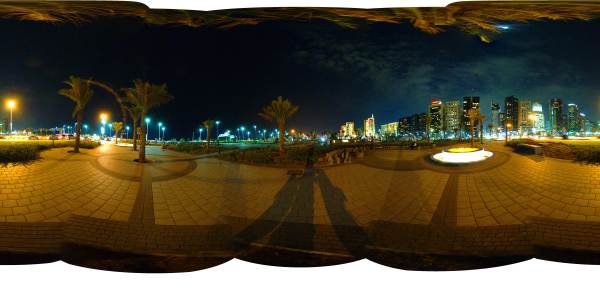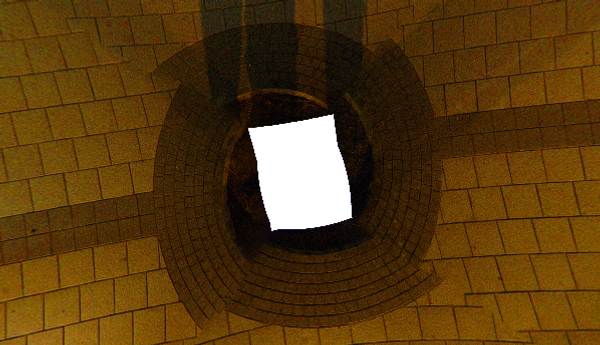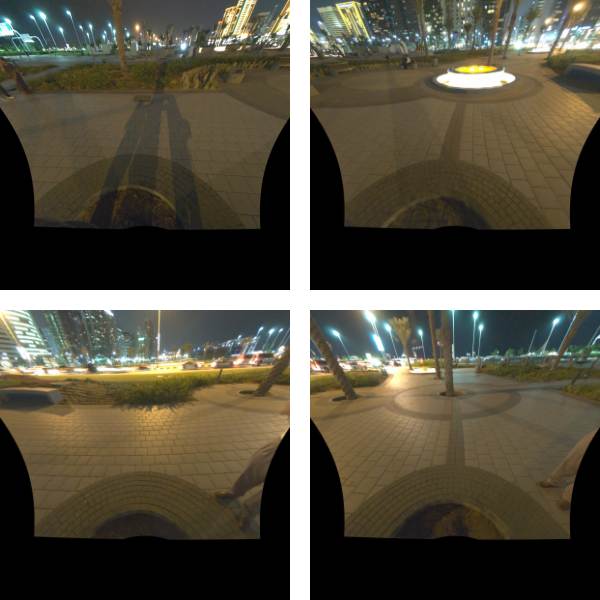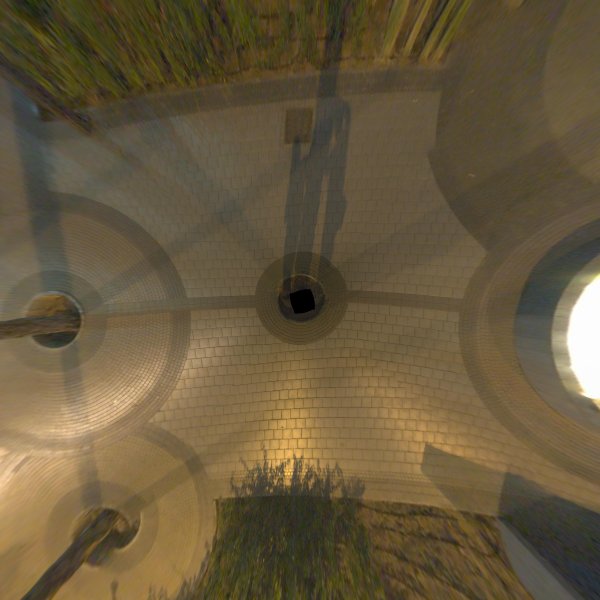Difference between revisions of "Fixing nadir parallax errors"
(new tutorial on stitching parallax errors) |
(note on image loaction) |
||
| Line 40: | Line 40: | ||
<pano file="npx-corrected.mov" width="600" height="450" scale="tofit" controller="true" cache="true" /> | <pano file="npx-corrected.mov" width="600" height="450" scale="tofit" controller="true" cache="true" /> | ||
| + | |||
| + | This scene is of the Abu Dhabi corniche, 30th November 2006. The buildings are decorated | ||
| + | in preparation for UAE national day. | ||
[[Category:Tutorial]][[Category:Tutorial:Specialised]] | [[Category:Tutorial]][[Category:Tutorial:Specialised]] | ||
Revision as of 02:16, 15 December 2006
Here is a set of source photos for a spherical panorama:
They were taken using a one second exposure without a tripod, the camera was stabilised by jamming it against the sides of a palm tree. This means that they don't stitch easily because of the large (approximately 60cm) parallax error:
Particularly, the nadir doesn't work at all. This is an extreme version of the usual problems caused by failing to rotate the camera around the No-parallax point:
However the nadir can be stitched by taking advantage of another technique generally used for stitching a linear panorama. The way this works is that if you assume the ground forms a plane just like a mural on a wall; a series of rectilinear Projection images taken from different locations can be assembled by optimising roll, pitch & yaw, Field of View and d & e lens correction parameters separately for each image.
So the first step is to create a series of defished rectilinear images from the fisheye Projection originals. You can do this in any of the GUI front-ends, but you do need to calibrate your lens first:
These can then be stitched together into a single nadir image with minimal errors, in this case I chose a fisheye projection, though a rectilinear or equirectangular projection would work just as well:
This image can then be reinserted into the original panorama project as another source photo with a different lens and stitched as normal. Here is the result as a QTVR, the buildings in the distance are a bit wobbly, but this could have been corrected with vertical control points:
<pano file="npx-corrected.mov" width="600" height="450" scale="tofit" controller="true" cache="true" />
This scene is of the Abu Dhabi corniche, 30th November 2006. The buildings are decorated in preparation for UAE national day.
